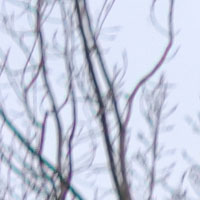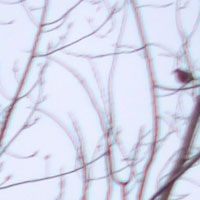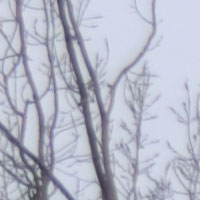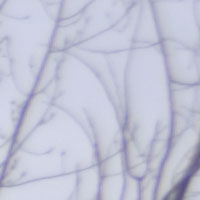
$220 SAVE $130 = 37.0% Western Digital 16.0TB Western Digital Ultrastar DC HC550 3.5-in… in Storage: Hard Drives
|

|

|

|

|

|

|

|
Lens Mount Damage and Misalignment
Related: digital sensor, lens mount, optics, tripods and support
As photographers, we have all taken pictures that aren’t sharp. A variety of reasons cause this:
- camera movement (slow shutter speed, mirror slap on a tripod, etc)
- focus error and/or inadequate depth of field;
- poor optical performance;
- misalignment of the lens mount and/or sensor/film plane with respect to the lens.
Camera movement is a photographer error; it can be corrected with proper technique, such as use of a higher shutter speed, a more stable tripod, mirror lockup, a gyroscope, etc. (Many of these issues are analyzed in exacting detail in Making Sharp Images).
Focus error can be caused by photographer error, by autofocus inaccuracy, by a moving subject, etc. Critical focus is essential with today’s high-resolution digital cameras.
Poor optical performance can result from poor lens design and/or misaligned optics. Today’s optics from major manufacturers are almost always good to outstanding as designed. The assembly of the designed optic (especially a zoom lens) requires extremely high precision, especially with today’s high-resolution digital cameras, and thus more than a few “dogs” appear even in the pro lens lines of Canon and Nikon. I have personally experienced this problem on multiple occasions with both Canon and Nikon. A trip to factory service has always resolved the optical issues.
Misalignment of the lens mount and/or sensor with respect to the optics is a less-common, but more insidious problem because it affects all lenses mounted on the camera. Without a careful test of other lenses on the same camera, the lens will get the blame.
A case of misalignment
In my January 22, 2006 blog entry, I showed what appeared to be a serious optical alignment problem with my 17-35/f2.8 AFS EDIF. That lens went into Nikon service along with sample photos—because I assumed that it was an optical problem (and perhaps it was—the lens is in service as I write this). The table below shows the problem.
| Nikon 17-35/f2.8D AF-S EDIF @ f2.8, about 25mm actual pixels |
|
| Crop from mid-left | Crop from mid-right |
 |
 |
Subsequent tests showed similar problems with my 17-55/f2.8 DX AFS EDIF, a lens that had always rendered images with exquisite sharpness on my Nikon D2x, even wide-open. This got my attention—how could two lenses both be so badly out of optical alignment?
After analysis of some additional frames, I resolved to test four (4) different Nikkors at the 35mm focal length. If some were sharp across the field and some were not, then I would know that the optics were the issue. Sharpness problems with every lens would indicate a camera problem.
The table below shows crops from the left/center/right from each lens. [See the large tables for larger crops and specifics]. The focus point was in the exact center of the image; see the image at the top of this page to see the crop locations (small squares).
Observe that in some cases left crop is blurred, and in other cases the right crop is blurred. None of the lenses show consistent sharpness.
The left and right sides of the image fall more or less within the plane of sharp focus, depending on the center focus position. (That’s my working theory at least).
| Left/Center/Right crops (actual pixels, no sharpening) Nikon 35/f1.4 AIS, 35/f2.8 PC, 17-55/f2.8 DX, 28-70/f2.8 |
||
| Left | Near-center | Right |
 |
 |
 |
 |
 |
 |
 |
 |
 |
 |
 |
 |
Conclusions
My Nikon D2x is headed to the Nikon Service Center.
This appears to be a case of camera lens mount (or sensor) misalignment with respect to the optical axis, because all four lenses show the same issue.
When lack of sharpness is observed in an image, the image should be examined to determine which cause might be responsible, as discussed in the Introduction.
After ruling out photographer error, a controlled test should be performed in which at least one other lens is shot side-by-side with the lens that appears to have a problem. Variables must be controlled, such as focal length, exposure, framing, etc.
The resulting images should be scrutinized. If the camera is the problem, the resulting images will show similar issues. If the lens is the problem, it will be clear by comparison with the other lens(es).
Test procedure
Tests were performed as follows:
- Nikon D2x, ISO 100, manual exposure, RAW files processed with Nikon Capture 4.4.1;
- Gitzo 1325 tripod with Burzynski tripod head;
- Mirror-lockup using MC-20 remote release
Seagate 22TB IronWolf Pro 7200 rpm SATA III 3.5" Internal NAS HDD (CMR)
SAVE $100
















